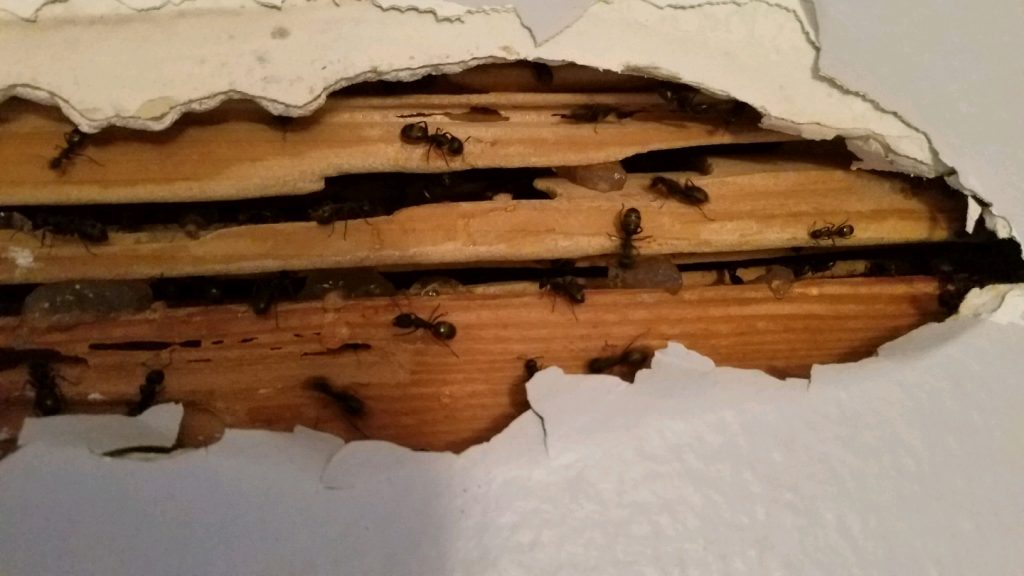425 691 7775 Eastside pest control company will have access to better equipment and pesticidal products than most homeowners, and they’ll know how to access hidden nests while causing the least possible amount of structural damage to your home. Carpenter ant nests come in two forms: parent nests and satellite nests. The parent nest is where the queen resides. When resources in the parent nest become limited, satellite nests are settled, and the colony expands. Nests can be indoors or out,
Seattle extermination finding them is the key to getting rid of carpenter ants. These ants follow scented trails to travel back and forth between food and the nests. Carpenter ants exterminators trailing behavior to your advantage to find the nests. Since they are most active late at night, place a few drops of honey or jelly on the backside of masking tape each night. When the ants feed on the honey, don’t spray or kill them. Instead, follow them back to their nest. This takes some patience.

Indoors, carpenter ant nests are usually located in areas where there is moisture damaged wood. Prime nesting locations include wall voids, behind dishwashers, near sinks and tubs or other areas with high levels of moisture. Ants often access their nests via baseboards, electrical outlets, door casings or cracks in the walls. If the ants are just foraging in your home and their nest is outside, you will often find colonies in tree stumps, dead or dying trees, and other wood with a lot of moisture damage.
Carpenter ants like to build nests in stacks of wood. where they will excavate the wood and form smooth tunnels inside of the wood. Carpenter ants do not eat wood, they only tunnel and chew through wood to create nests.
Western black carpenter ant colony, when mature, contains about 20-30,000 workers, with large colonies of more than 60,000 individuals. There is usually only one functional, wingless queen per colony. Swarmers are not produced until the colony is more than two years old. They are produced in the previous year and held over the winter in the nest for release the following year. Swarmers appear from May until August in the eastern United States and from February through June in the west.
Keep tree branches and other plants cut back from the house. Sometimes pests use these branches to get into your home. Make sure that there are no cracks or little openings around the bottom of doors or around windows. Seal all openings with a silicone-based caulk. Also, keep firewood and building materials stored away from the home.